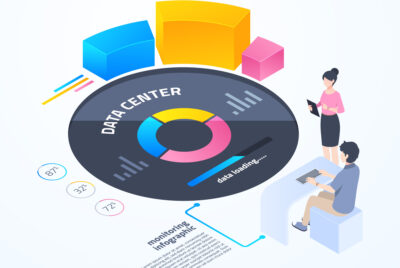Maximizing SEO Success with the Ultimate Template: Why It Matters
In the ever-evolving world of SEO, staying organized and systematic is key to success. Without an effective strategy, optimizing a website for search engines can quickly become overwhelming. Fortunately, an SEO template can simplify the process, offering a structured approach to optimize on-page elements, track changes, and measure results all in one place.
In this article, we’ll walk through the significance of each section in the SEO template and explain why each element is crucial for improving website rankings, user experience, and ultimately, online success.
The Importance of Using an SEO Template
An SEO template is a vital tool for anyone serious about improving their website’s performance in search engines. By providing a clear structure for tracking various aspects of SEO, it enables you to:
- Stay Organized: You can clearly see what pages need attention and what changes have been made.
- Prioritize Efforts: Helps you focus on optimizing the most important pages first, ensuring that SEO improvements are impactful.
- Track Progress: By recording dates and changes, you can easily measure what’s working and where improvements are needed.
Let’s break down the template and explore how each section contributes to your website’s overall SEO strategy.
Column A: Content Type
Why It’s Important: Identifying the content type helps clarify the purpose of the page. Whether it’s a homepage, product page, blog post, or thank-you page, each type has unique SEO requirements.
Benefits: Knowing the content type allows you to tailor your SEO strategy. For example, a blog post might focus more on content depth and keyword density, while a product page may prioritize clear calls-to-action and optimized product descriptions.
Column B: Current URL
Why It’s Important: The URL structure of a page plays a significant role in SEO. Clean and descriptive URLs help search engines understand the page’s content and make it easier for users to navigate.
Benefits: Tracking current URLs ensures that they are optimized for SEO, using keywords and avoiding unnecessary parameters that could harm your rankings. Properly optimized URLs contribute to better crawling and indexing by search engines.
Column C: Current Page Title
Why It’s Important: Page titles are one of the most critical on-page SEO factors. A well-crafted title helps search engines understand the page’s content and improves click-through rates from search results.
Benefits: By assessing and optimizing page titles, you can ensure that they are concise, relevant, and aligned with your target keywords. This can significantly improve your rankings and make your pages more clickable in search results.
Column E: Current Page Description
Why It’s Important: The page description, or meta description, gives users and search engines a summary of what the page is about. While it doesn’t directly impact rankings, it influences click-through rates from search results.
Benefits: Optimizing the meta description improves the likelihood of users clicking on your page when it appears in search results. A compelling description that includes keywords also helps search engines understand the page’s relevance.
Column G: What’s the Purpose of the Page?
Why It’s Important: Every page on your website should have a clear purpose—whether it’s to inform, sell, or entertain. Defining the purpose helps you create content that directly serves the needs of your audience.
Benefits: Knowing the purpose of each page ensures the content aligns with user intent. It helps you craft engaging content that resonates with your target audience, leading to better user experience and higher engagement rates.
Column H: Who is the Target Audience?
Why It’s Important: Understanding your target audience is critical for effective SEO. The content should speak to their needs, questions, and interests.
Benefits: Clear targeting increases the likelihood that your content will resonate with the right people, improving engagement metrics such as time on page and bounce rate. It also ensures that the keywords used are relevant to what your audience is searching for.
Column J: Edit Date
Why It’s Important: SEO is an ongoing process, and it’s essential to track when pages are edited to ensure that changes are up-to-date.
Benefits: Keeping track of edits allows you to report progress effectively and provides insight into the effectiveness of SEO changes over time. You can see which adjustments lead to improvements in rankings and which areas need further attention.
Column K: New Page Title
Why It’s Important: Updating the page title is essential for aligning it with your current SEO strategy. A new page title should reflect your target keyword, be concise, and serve the page’s purpose.
Benefits: A well-crafted new title will improve search rankings by including relevant keywords while maintaining a natural flow. An updated title can make your page more discoverable and clickable in search results.
Column L: Page Title Length
Why It’s Important: Search engines typically display only the first 70 characters of a page title. Ensuring that your page title fits within this limit helps it appear fully in search results.
Benefits: By checking the length of your title, you can avoid truncation in search results, ensuring that your key message and target keyword are visible to potential visitors.
Column L: New Page Description
Why It’s Important: Your page description should align with the page’s content while including the target keyword. A well-written meta description encourages users to click on your link when it appears in search results.
Benefits: A compelling meta description improves click-through rates, driving more traffic to your site. Including the keyword ensures that search engines understand the page’s topic, contributing to better rankings.
Column N: Page Description Length
Why It’s Important: Search engines recommend meta descriptions to be between 150-160 characters. Keeping your descriptions within this range ensures they display correctly in search results.
Benefits: By adhering to the optimal length, you maximize the chances of your page description being fully visible to users, thus improving the click-through rate.
Column O: Target Keyword
Why It’s Important: Your target keyword defines the main topic of the page. Optimizing the page for a single keyword allows you to focus on specific search intent, making it easier for search engines to rank your page.
Benefits: Focusing on one keyword per page improves relevancy and helps you rank better for that specific term. This targeted approach leads to more qualified traffic and higher conversion rates.
Column P: Content
Why It’s Important: Quality content is at the heart of SEO. Content needs to be relevant, informative, and engaging while answering users’ questions.
Benefits: High-quality content not only improves your rankings but also ensures that users find what they need. It keeps visitors on the page longer, reducing bounce rates and increasing the likelihood of conversions.
Column Q: Header
Why It’s Important: Headers organize your content and help both users and search engines understand the structure of your page. An H1 header typically signifies the main topic, while H2 and H3 headers help break up the content into sections.
Benefits: Properly formatted headers improve readability, which leads to a better user experience. They also give search engines clues about the content’s structure, improving your chances of ranking for related keywords.
Column R: Subheaders
Why It’s Important: Subheaders (H2, H3, etc.) further break up content into smaller sections, making it easier for users to navigate.
Benefits: By using subheaders strategically, you improve content structure, which not only benefits readability but also SEO. Subheaders help search engines understand the content better, leading to higher rankings.
Columns S-T: Images
Why It’s Important: Images enhance the user experience, make the page visually appealing, and help illustrate key points. Proper image optimization, including file names and alt text, improves SEO.
Benefits: Optimized images can drive traffic through Google Images, improve load speed, and contribute to better user engagement. Alt text also helps search engines understand the context of images, improving overall SEO.
Columns U-V: Internal Links
Why It’s Important: Internal links guide users to related content, keep them on your site longer, and help search engines crawl your website effectively.
Benefits: Internal linking improves site navigation and spreads SEO value across your pages. It also allows users to find additional relevant information, increasing engagement and time spent on your site.
Column W: Social Media Sharing
Why It’s Important: Social signals, while not a direct ranking factor, contribute to visibility and traffic. Making it easy for users to share content increases exposure.
Benefits: Social media sharing can lead to more organic traffic and indirectly improve rankings. Social proof increases credibility, and more shares mean more potential backlinks.
Column AA: Calls-to-Action (CTA)
Why It’s Important: A clear call-to-action drives conversions. Whether it’s to make a purchase, download a resource, or sign up for a newsletter, every page should encourage users to take the next step.
Benefits: A well-placed CTA increases conversion rates. Multiple CTAs targeting different stages of the buyer’s journey ensure that you’re engaging users at every point.
Column AG: Notes
Why It’s Important: This section allows you to document anything relevant that doesn’t fit into the other columns, such as planned updates or technical issues that need addressing.
Benefits: By keeping notes, you can track ongoing SEO tasks and ensure nothing falls through the cracks. It’s an essential part of maintaining an organized and effective SEO strategy.
Conclusion
Using an SEO template helps streamline the process of optimizing your website’s content and ensures that every aspect of on-page SEO is covered. Each column in the template is designed to focus on critical areas that impact search engine rankings and user experience. Whether you’re updating page titles, optimizing content, or refining meta descriptions, the template keeps you



